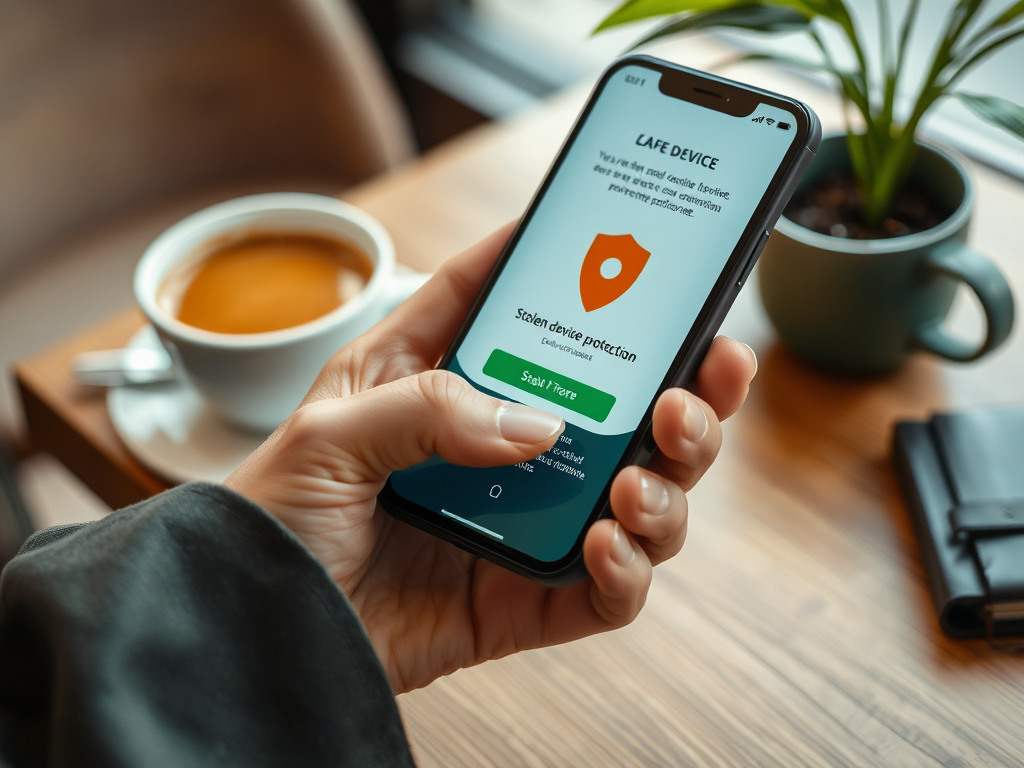In an increasingly interconnected world, our devices are not just tools—they hold our lives in their digital embrace. From photos capturing cherished memories to essential documents that drive our professional successes, the loss of a device can feel catastrophic. As we navigate the complexities of this digital age, the frequency of device theft raises incredible concerns. One pressing question arises: Can stolen device protection be our safety net against data loss?
Stolen device protection encompasses a variety of systems designed to secure sensitive information when our devices are compromised. It provides a set of features that aim to lock down personal data quickly and effectively, allowing users some peace of mind when unforeseen events occur. However, it’s essential to explore not only how these protections work but also their limitations. We must evaluate if relying solely on these systems is enough or if additional strategies are necessary to safeguard our invaluable data.
Understanding Stolen Device Protection

Stolen device protection tools form the first line of defense against data loss, incorporating various features tailored to mitigate the impact of theft. The primary functionalities often include remote locking, data wiping, and location tracking for lost devices. These tools are aimed at establishing barriers against unauthorized access, ensuring that even if a device is stolen, the owner retains control over their information.
- Remote Locking: This feature allows users to lock their devices remotely, preventing unauthorized access and protecting personal information.
- Data Wiping: In cases where recovery isn’t possible, users can erase all data from their device remotely, safeguarding sensitive information from prying eyes.
- Location Tracking: Utilizing GPS technology, users can identify their device’s location, assisting law enforcement in recovery.
Importance of Data Protection

As we engage more deeply with technology, the stakes of data exposure continue to rise. With increasing reports of identity theft and data breaches, protecting one’s personal information becomes an urgent necessity. A lost device often entails serious implications, including not just the loss of hardware but the potential for stolen identities or critical work documents. Moreover, it can lead to emotional distress, particularly when personal photos or memories are irretrievably lost.
- Identity theft and fraud: Stolen data can be misused to create fake identities or access financial resources.
- Loss of sensitive work documents: Businesses may face significant setbacks when critical files are lost, directly affecting their operations.
- Emotional distress: The psychological toll of losing personal data can be profound, causing lasting stress and anxiety.
Evaluating the Effectiveness of Stolen Device Protection
While stolen device protection offers valuable features, it’s crucial to assess its effectiveness thoughtfully. Understanding its strengths and weaknesses can empower users to make informed decisions about their data security. Strengths include a quick response time to initiate protective measures and user control to manage devices remotely. However, these systems aren’t foolproof. There is always a risk that skilled thieves may bypass these security measures.
| Feature | Advantages | Limitations |
|---|---|---|
| Remote Locking | Prevents unauthorized access | May not stop theft |
| Data Wiping | Secures sensitive information | Caution: Recovery efforts may be futile |
| Location Tracking | Helps recover stolen devices | Depends on GPS availability |
To fully protect your data, relying solely on stolen device protection is inadvisable. It’s essential to combine these protections with other effective strategies. Here are some recommendations for a more robust approach:
- Encryption: Encrypt sensitive files so they remain unreadable without a decryption key.
- Regular Backups: Consistently back up your data to minimize losses, even if your device is stolen.
- Use of Strong Passwords: Employ strong, unique passwords for your devices and accounts to enhance security.
Conclusion
Stolen device protection acts as an integral part of your defense against data loss, providing essential features that can help to secure your information. However, it is not infallible and should be supplemented with additional security measures. By adopting encryption, maintaining regular backups, and utilizing strong passwords, you can develop a comprehensive strategy to safeguard your data.
Frequently Asked Questions
- What is stolen device protection?
This refers to features designed to secure personal data in case of theft, like remote locking and data wiping. - Can stolen device protection guarantee recovery of my data?
No, while it helps secure data, there’s no absolute guarantee that your data can be recovered once the device is stolen. - What should I do if my device is stolen?
Use your stole device protection features immediately to lock, locate, or wipe your device and report the theft to local authorities. - Is it necessary to encrypt data if I have stolen device protection?
Yes, encryption provides an extra layer of security, ensuring your data is protected even if your device is accessed by a thief. - Can I use stolen device protection on multiple devices?
Many stolen device protection services support multiple devices, but check your service agreement for specific limitations.


